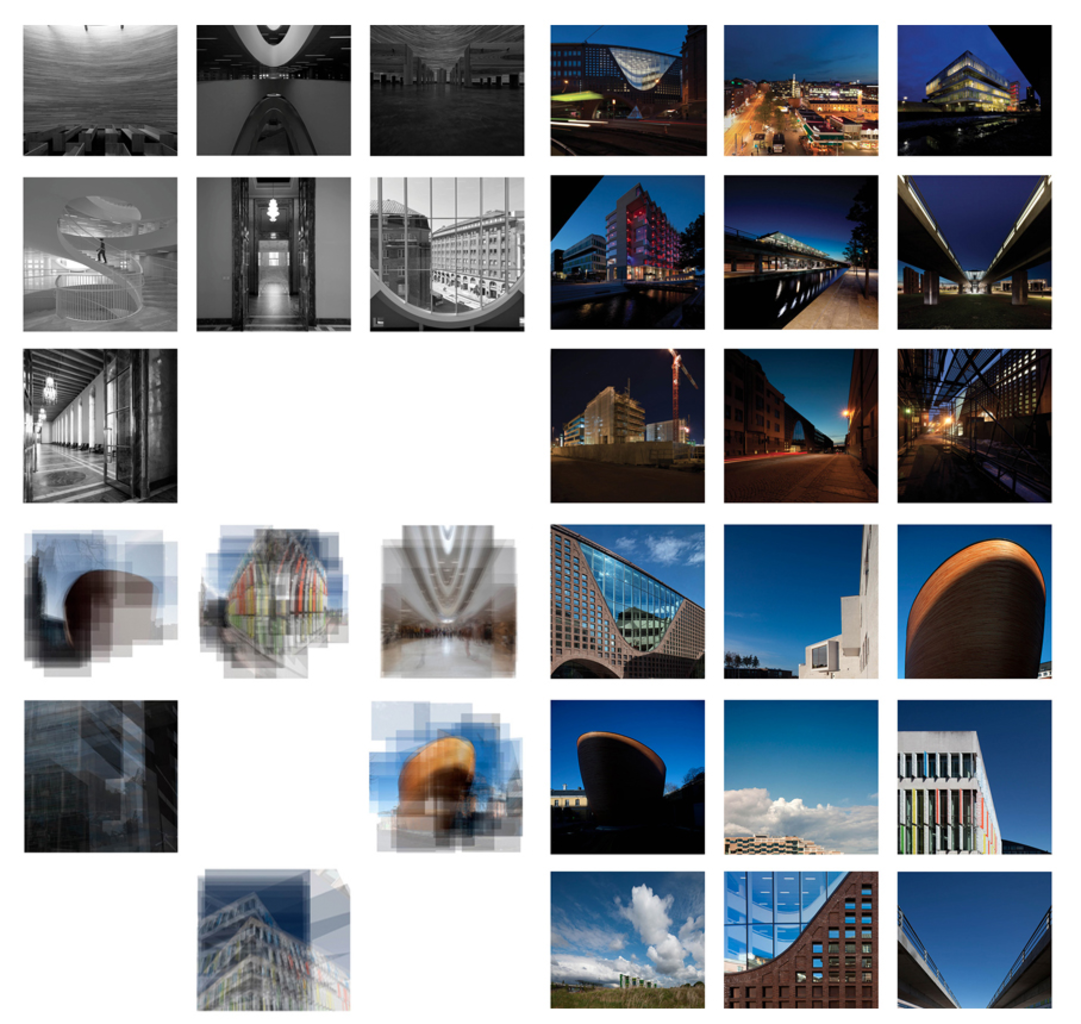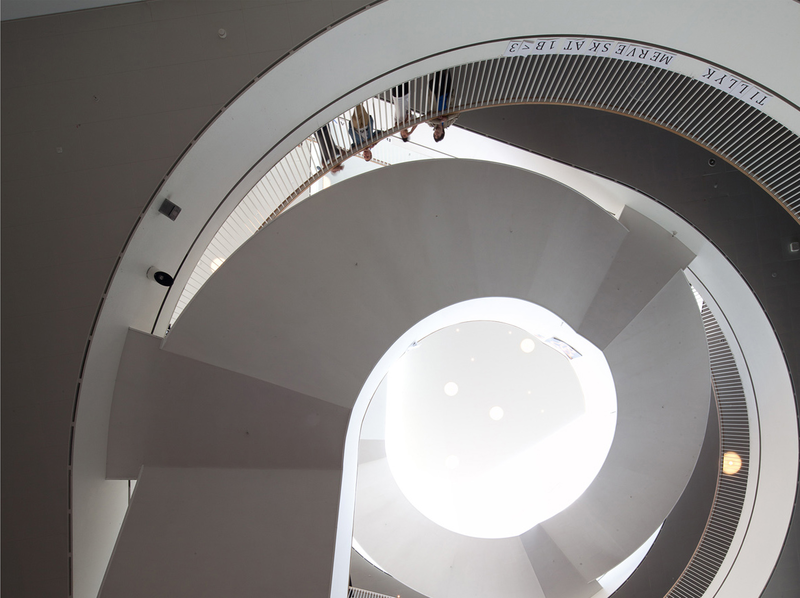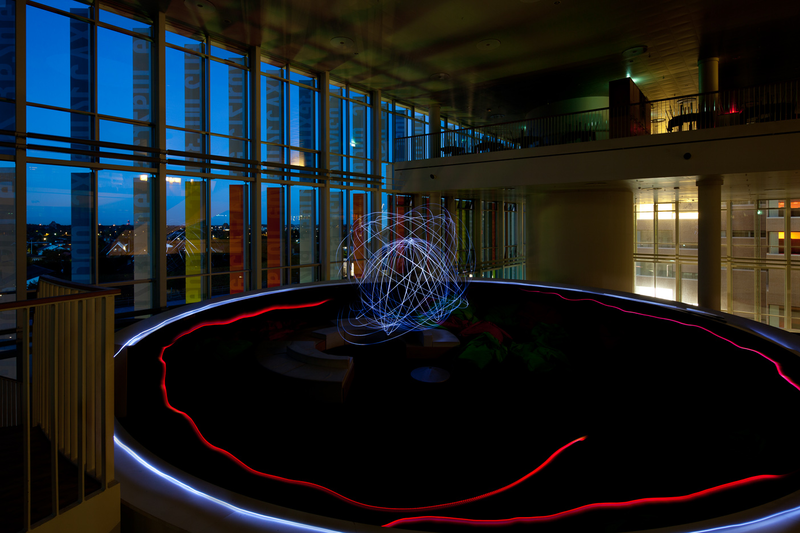Results - Images
This page provides links to downloadable pdfs which are offered as sketches used to work out what Archmospheres, Atmographs, or a synthesis of each might eventually look like and what role they might play in the representation (and subsequent understanding) of architecture.
It may be unclear at times what exactly the two categories are taken to mean and how they are evinced in the current use of images. Undoubtedly they slide between different roles. This could potentially lead to some confusion as to whether they are just illustrations or make claims at being methodical tools, or in what sense the images represent results.
For that reason, it may be helpful to return to an attempted definition of these images, clarifying the guiding principal behind their production, selection and consequent division.
Archmospheres
These images seek to directly represent extracts of interviews, which were centred around the notion of atmosphere. This is therefore the point of departure for each image, as opposed to the depiction of objects from conventional views under conventional light and weather conditions. Nonetheless, these Archmospheres are the more conventionally correct images, on the whole. They are created with a client in mind, they do a job, meet requirements, seek to satisfy and answer rather than pose questions. Where they deviate from the type of images commonly found in architectural publications, they do so because of their focus on people (indicated by nearly all architects as being important), context, function of the building (not the building's functionality, which invariably means modernist architectural tropes attractively depicted via photographic ones), or references to the work of photographers who have made a name for themselves by doing something other than following standard operating procedures. They are, in a word, commissioned work. The difference here is that the commission stems from interviews – negotiation through dialogue – rather than briefs agreed between project architects and PR managers, prior to bringing the photographer in.
Atmographs
This exposition is part of a larger research project, which investigates institutional practices of architects, publishers and photographers working in collaboration. That project sets out ideas about, and research into, what might be loosely termed the past, present and future of architectural photography, insofar as it examines conventions and their possible meanings and effects over time.
While the first part studies the past through a careful analysis of published materials, and the third postulates possible future collaborations between academia and industry, this middle part is focused appropriately on the continuous present. The aim is to problematize default beliefs and practices, both those of the photographer and those of the architect. The first step was to enter into dialogues. The second was, of course, to take pictures. But of what sort? How might one become alert to one's own default practices and, more importantly, how might they be sidestepped? One answer has just been provided in the form of Archmospheres – architectural atmospheres - and their potential meaning. But perhaps they will not suffice, at least from the photographer’s point of view. Hence, an attempt was made to produce Atmographs – atmospheres photographed – as another means of working. The goal here was a different one: to reveal the unexpected, the unseen, the undiscovered, via photographic practices not normally employed in the production of this sort of photography. Both the photographer and architect engage in an act of discovery through surprises equally able to disgust and delight. It is a bit like going for a walk with your eyes closed. On the one hand it will teach you how to see with your feet, on the other, you may bump into a tree or fall off a cliff.
With my artist hat on, I consider this a work in progress; but upon donning the academic's cap, I see this as research ripe for sharing. Questions that arise through art work are, I believe, valid and vital, as is the process of exploration. Much is written about artistic research from a theoretical distance. What it might mean and offer in terms of subjective knowledge and non-scientific investigation. And such guidelines are interesting to consider and have inspired this current undertaking. But they are nearly always written to argue for the need of such projects and imagine what they might be like: towards, in search of, about... What about the experience as lived, with sleeves rolled up and hands dirtied? Surely that part of the process is as vital as it is missing?
The results were perhaps hit and miss, and the taxonomies are certainly fuzzy at this early stage.
In the next phase I produced grids in order to search for gaps in each type of depiction where annexed to each assignment. I asked myself the following questions: Do all six case studies reflect an exploration into each type of image? Why and why not? Are more images needed or is more reflection on the methodology the order of the day? Have I really found a means of depicting atmosphere? Have I ceased to apply ingrained practices learning through years of repetition? Am I happy with these images? Are they as satisfying as those deemed the product of standard operating procedure? It is hoped that they will at least offer the reader some food for thought and an evaluation of the validity of some of the assertions and methods provided within the text of the exposition. But they are not themselves an endpoint.
Recordings
Thankfully, new mediums often offer new opportunities; such is the case here. An exposition such as this would not ordinarily include recorded interviews due to the limitations of print: medium specificity and space. Neither of these are a problem however, with an online publication. To some it may seem unnecessary listen to hours of interviews; hence, recordings are included only as an appendix to the article so that only interested readers (thenceforth listeners) will have the opportunity to do so. Like links to referenced sources, they act as an additional avenue of investigation, as and where such investigation is deemed useful. They are not, however, crucial to the understanding of propositions, evidence, methods offered here in this exposition. Efforts have been made to extract key parts interviews which may be found alongside images in the pdfs provided, in addition to appearing in their standard place: as evidence within textual arguments.



